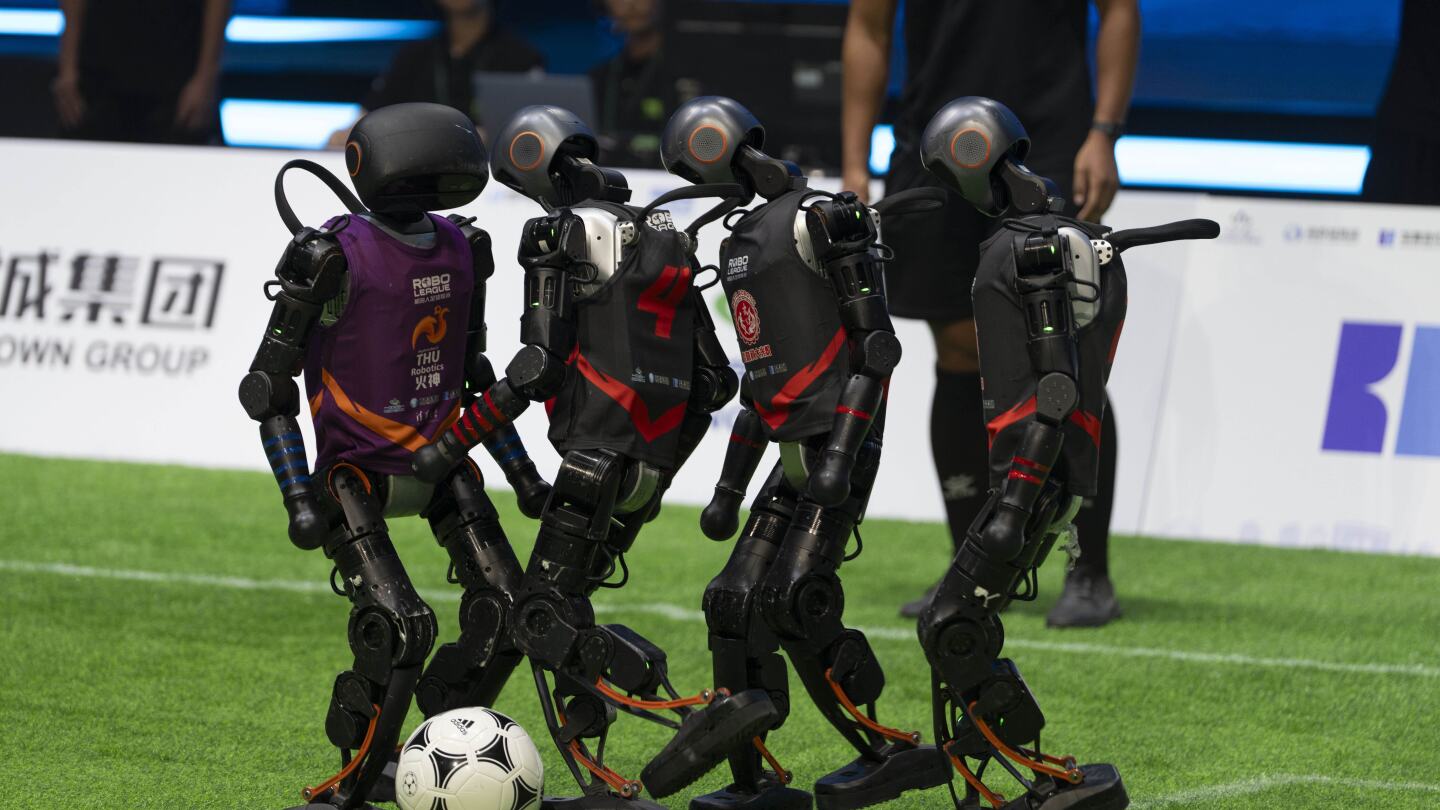BEIJING (AP) — While China’s men’s soccer team has struggled to capture the nation’s attention in recent years, humanoid robots have stepped in to fill the void, captivating fans with their technological prowess rather than athletic skill. On Saturday night in Beijing, four teams of humanoid robots competed in fully autonomous 3-on-3 soccer matches, marking a first for China and offering a glimpse into the upcoming World Humanoid Robot Games, also set to take place in the capital.
According to event organizers, the matches were groundbreaking because the robots operated completely autonomously, relying on AI-driven strategies without any human intervention. Equipped with advanced visual sensors, these robots could identify the ball and navigate the field with agility, standing up on their own after falling. However, the spectacle was not without its hiccups, as several robots needed to be carried off the field on stretchers, adding a touch of realism to the event.
China’s AI Ambitions in Robotics
This development comes as China intensifies its efforts to advance AI-powered humanoid robots, using sports competitions such as marathons, boxing, and football as testing grounds. Cheng Hao, founder and CEO of Booster Robotics, the company behind the robot players, highlighted the importance of these events. He explained that they serve as ideal environments for testing and accelerating the development of algorithms and integrated hardware-software systems.
Cheng also stressed the importance of safety in the application of humanoid robots. “In the future, we may arrange for robots to play football with humans. That means we must ensure the robots are completely safe,” he noted. “For example, a robot and a human could play a match where winning doesn’t matter, but real offensive and defensive interactions take place. That would help audiences build trust and understand that robots are safe.”
Technical Innovations and University Involvement
Booster Robotics provided the hardware for all four university teams participating in the event. Each school’s research team was responsible for developing and embedding their own algorithms for perception, decision-making, player formations, and passing strategies, taking into account variables such as speed, force, and direction.
In the final match, Tsinghua University’s THU Robotics team emerged victorious, defeating the China Agricultural University’s Mountain Sea team with a score of 5–3. The victory was celebrated by supporters, including Mr. Wu, a Tsinghua fan who praised the competition. “They (THU) did really well,” he said. “But the Mountain Sea team (of Agricultural University) was also impressive. They brought a lot of surprises.”
Broader Implications and Future Prospects
As China continues to push the boundaries of AI and robotics, these autonomous soccer matches serve as a testament to the country’s ambitions. The event not only showcases technological advancement but also raises questions about the future of sports and human-robot interactions. The potential for robots to participate in human sports opens up new possibilities for entertainment and technological integration.
Meanwhile, China’s men’s national soccer team remains a distant memory for many fans, having made only one World Cup appearance and already being knocked out of next year’s competition in Canada, Mexico, and the United States. In contrast, the humanoid robots have quickly captured the public’s imagination, offering a new kind of spectacle that blends technology with sport.
As the World Humanoid Robot Games approach, all eyes will be on Beijing to see how these innovations continue to evolve and what they might mean for the future of both robotics and sports.
